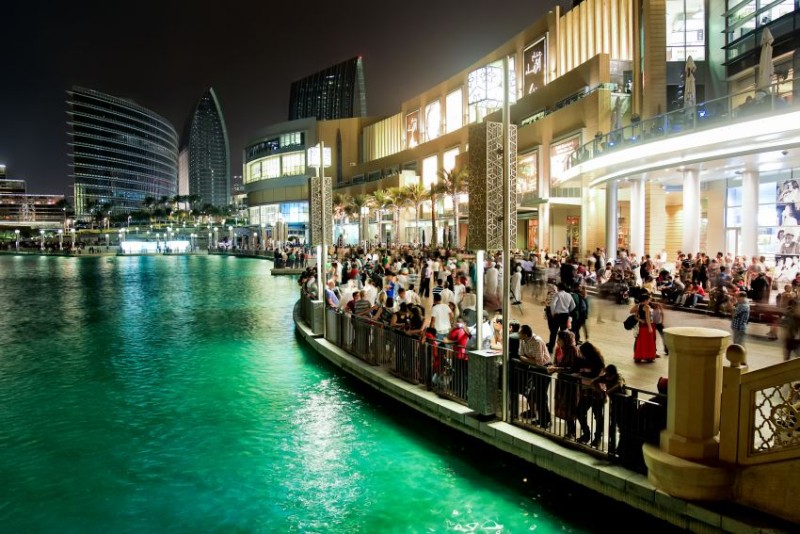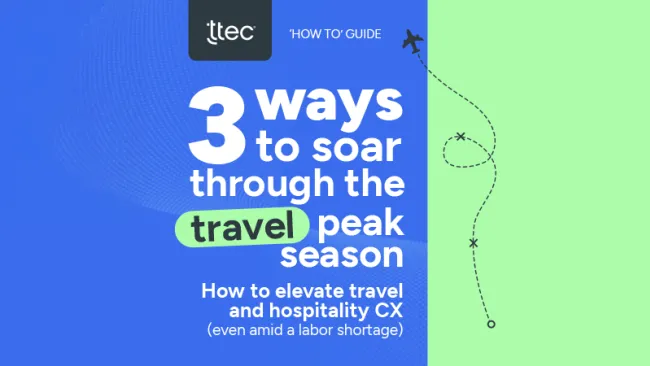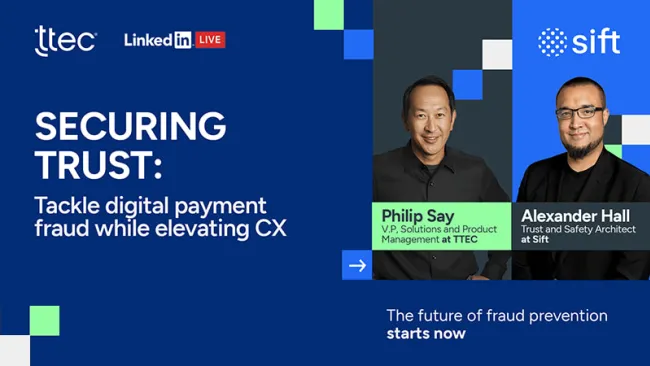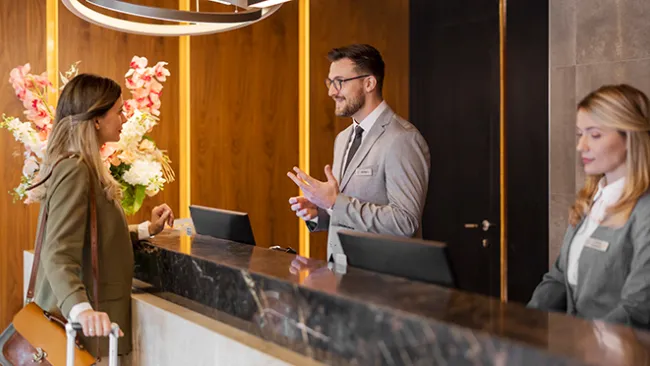Dubai’s leading tourism attraction, the Dubai Shopping Festival, draws millions of visitors over the course of only one to two months per year. The DSF emphasizes promotions, discounts, and events at 3,500 retail shops and 40 malls to attract travelers from around the world. In 2008 DSF drew 3.2 million visitors and spending reached AED 12.5 billion ($3.4 billion).
Now, with greater competition from other global shopping festivals, like The Great Singapore Sale and the Hong Kong Summer Temptations, Dubai Shopping Festival Office (DSFO) CEO Laila Suhail is tasked with keeping customers coming back to Dubai’s festival, as well as with targeting new prospects to bring to the yearly extravaganza. Here, she explains some of the challenges, strategies, and successes running the DSFO.
Customer Strategist: What are your responsibilities as CEO of the Dubai Shopping Festival Office?
Laila Suhail: DSFO is an agency of the Dubai Economic Development Department, a Dubai government department. DSFO works as an enabler for the retail and tourism sectors in Dubai and has four main products, namely Dubai Shopping Festival, Dubai Summer Surprises, Eid in Dubai, and Modhesh the cartoon character. As CEO of the DSFO, I lead a highly experienced team of mostly UAE nationals to plan and implement [these] events with the utmost professionalism…making sure that our strategies for these events are in synch with the overall strategy of Dubai in its aim to be the leading business, leisure, and tourism destination worldwide.
CS: You’ve spent a number of years at DSFO. How will you take what you’ve learned and apply it to your new position?
LS: I have to say that whatever we have achieved in the past editions of DSF and DSS is largely due to our sponsors from the private sector. The unique alliance between the public sector and the private sector, with DSFO being a facilitator of this alliance, is our main key to success. It’s all about the contacts you build and the way you approach those contacts, or sponsors, if you like, to get them on board with your events. This is what makes us the leading event makers in the region. I greatly depend on my accumulated experience and the solid relationships I have built with the major players in the private sector.
CS: Your customers comprise a diverse range of nationalities and ages. What kind of marketing challenge does that represent?
LS: The DSF slogan says, “One world, one family, one festival.” That by itself is our main message. It was inspired by the complex arabesque of our great city, where more than 200 different nationalities live in peace and harmony. Yes, we do have a challenge in catering to the needs of the diverse population of our visitors, but the flexible and colorful nature of our events makes them adaptable to the different tastes and aspirations of their audiences. On another hand, this weave of diversity of the Dubai community has set the general mood of acceptance to all cultures, which assists us, as all nationalities are open to learn about other cultures through our events. A clear example of that is when we initiated our latest event, Eid in Dubai. This event is purely based on the Islamic annual celebration, yet all nationalities and ethnicities cheerfully participated and it was a great hit.
CS: The DSF also involves the Dubai Shopping Malls Group and the Dubai Gold and Jewelry Group to develop events and promotions. How do you align the expectations and strategies?
LS: DSFO had a key role in creating both of these entities more than a decade ago. The main objective of these groups is to organize both the retail and gold sectors and gather them to collectively work toward one aim: promoting Dubai. The task wasn’t easy; when I started addressing the mall managers with the idea they thought I was dreaming—how could competing malls come together under one roof, when each of them has its own policy and strategy? The same goes for the gold retailers, too. However, it all boils down to how you approach the issue and the logic behind it. Once I explained to them the benefit of such a union and the positive outcome, they…jumped on the idea. Since then, both DSMG and DGJG have had pivotal roles in promoting Dubai to the region and the world, during our events [and] year round. Dubai is now known as the shopping hub of the region and the City of Gold. That by itself is a tourism attraction. Clearly this would not have happened if it wasn’t for the mutual coordination and common goals, with DSFO being the facilitator by providing a common ground for all group members to work collectively.
CS: You have said that your biggest challenge last year was to revamp the festival formats. Did you succeed in doing so?
LS: We have succeeded over the past two years to significantly develop both of our major events, DSS and DSF. For example, in DSS we dropped the concept of “10 weeks and 10 surprises” for a more aggressive event in which we have 65 days full of surprises for our visitors. It was a great hit.DSS witnessed a healthy increase in both visitor numbers and expenditure in the latest couple of editions, as well as a notable increase in visitor satisfaction.
For DSF we also had a significant shift in our strategy, whereby we refocused on the shopping element as a core activity. That was evident during DSF 2009, where we had unprecedented promotions and discounts, which in turn enhanced Dubai’s position as the shopping hub of the region. These great achievements came after long days and nights of hard work from the DSF Office team. There still are many strategic plans to be implemented to raise the bar again for the festival industry in the region. I strongly believe that it’s not enough to be the leaders; we should always be active and pursue development in all details of our events to maintain our leadership.
CS: What are your plans for continuing to grow the DSS?
LS: Launching DSS was very challenging for various obvious reasons. How could you invite people to spend their holiday in Dubai when your own residents were traveling outside amid a very challenging climate? Bear in mind that we were competing with other great summer destinations in the world where fair weather is their key attraction. However, we had followed the visionary directives of HH Shaikh Mohd Bin Rashed Al Maktoum, UAE vice president prime minister and ruler of Dubai, and enjoyed great support from the government and the private sector. In addition, a key factor of our success is the state-of-the-art infrastructure and attractions that Dubai has to offer for its visitors during the summer season. With regard to our long-term plans for DSS, we always strive to improve our offerings to visitors and meet their expectations for a great summer holiday, making sure that when they spend their holiday in Dubai they get real value for their money, whether they are spending on shopping, hotels, restaurants, or any other attraction—and that will keep them coming back to Dubai.
CS: DSF 2009 focused on shopping and emphasized a lot of promotions and discounts. What was the strategy for delivering that messaging and promotions to customers?
LS: Our strategy was based on a strong communications campaign through aggressive marketing and clear PR messaging, and our message was “DSF is a shopping season on its own and is offering the best shopping promotions and discounts in its history.” This message was communicated through all our channels, especially in our road shows and through the various travel and tourism exhibitions we participated in around the world. Our strategy also included involving the shops and shopping malls to initiate their own campaigns to emphasize the same message, which echoed all around the region during DSF 2009.
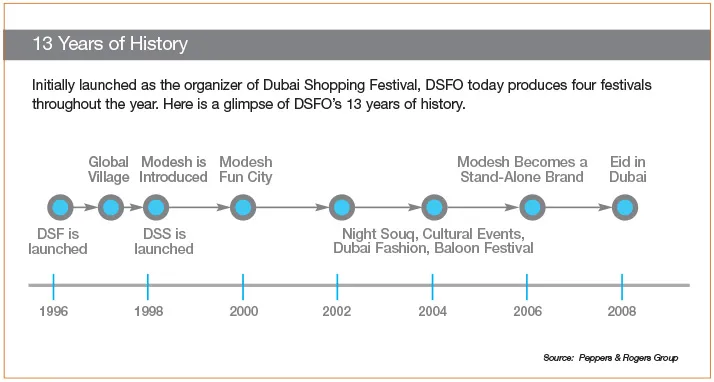
CS: Since 1998 the number of total visitors participating in the DSF has nearly doubled. To what do you attribute its success?
LS: The success of our events can be attributed to a lot of factors, but I would start with the unparallel political, social, and economical stability that our leaders implanted strongly in all corners of UAE, which positioned Dubai as a safe haven for all and a must-visit city. Add to that the hospitable and warm nature of the UAE population, which gives visitors a welcoming feeling that makes them come back.
The unique collaboration between the public and private sectors during our events is another key element. This is what gives our events consistency and a solid foundation. Another important factor is the amazing boom that Dubai witnessed over the past 10 years in most of its sectors, especially in its infrastructure and key tourism destinations. Other factors relate to the hard work and careful planning of the DSFO team prior to any of our events.
CS: How do you stay top of mind with consumers?
LS: We strive to maintain our leadership through various means and practical methods. For example, we conduct a comprehensive research study based on our main stakeholders’ feedback after each of our events to measure our weak and strong points according to criteria that uses very high standards. This research allows us to thoroughly examine the reactions of our visitors and their feedback, and most important, their spending behavior. It’s based on that research that we improve and develop our events to meet, and even exceed, expectations. We also update our database on a daily basis with the latest happenings in the global festival industry.
CS: The DSFO is showing impressive performance, but faces significant challenges, including a decrease in global consumer spending. How will this affect DSFO’s approach?
LS: I am very conscious of the fact that consumer spending has considerably changed in the past year or so; shoppers are spending wisely now. They are very cautious about what they spend and where they spend it. Our strategy for the next year is to offer shoppers real value for their money. Once they feel that they are happy with the value they get for the amount they spend, they will be encouraged to spend more. We will also monitor closely how the consumers are adjusting to the new situation and build on that. I believe that in these times of uncertainty we have to rebuild the relationship with consumers and try to break that psychological barrier between the shoppers and the retailers by providing the platform for the best shopping experience they can have.


